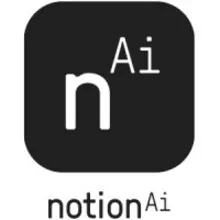Enterprise analytics and mobility platform
A/B Testing: What is it?
Two variations of an application or website are compared in A/B testing to determine which is the most effective. A/B testing is simply an experiment in which consumers have presented two or more versions of a website at random and statistical analysis is used to discover which variation works better for a specific conversion objective. An A/B test (split testing or bucket testing)that compares a variant to the existing experience allows you to ask specific questions about changes to your website or app and then gather statistics on the effect of those changes.
What is the process of A/B testing?
An A/B test involves modifying a web page or app screen to generate a second version of the same page. This modification might be as simple as a new headline or button or a whole page overhaul. The original version of the page (known as the control) is then shown to half of your traffic, while the updated version is presented to the other half (the variation). Next, visitors' interaction with each encounter is measured and gathered in a dashboard and analyzed using a statistical engine as they are provided either the control or variation. After that, you can determine whether adjusting the experience had a good, negative, or neutral impact on visitor behavior.
The Advantages of A/B Testing
Let's check what are the advantages of A/B testing software that you can utilize in your business:
- User involvement has improved: There are many elements that can be A/B tested on a page, an ad, or emails, such as the headline, graphics, call-to-action (CTA) forms, typefaces, and colors. Adjusting consumers' behavior one by one will reveal what affects their behavior and what does not. Through optimization for success, the user experience will improve with the "winning" adjustments.
- Enhanced content: For example, while testing ad text, you'll need a list of suggested modifications to display to users. The process of creating, examining, and analyzing these lists eliminates ineffective language, resulting in more user-friendly final versions.
- Bounce rates are lower: Users are more likely to stay on your website or application if you use A/B testing. By spending more time on your site, people are more likely to recognize the value of the content and convert.
- Conversion rates have improved: Testing A/B is the easiest and most effective method to pinpoint which content is most likely to encourage visitors to sign up and make a purchase. Understanding what works and what doesn't aids in converting more leads.
- Increased conversion rates: The lessons learned from A/B testing on one experience may be used in other experiences, such as sites for higher-priced items and services. Better interaction on these pages will result in comparable conversion increases.
- Analytical simplicity: It's simple to pick a winner and loser in an A/B test: whether a page's or app's metrics are closest to the test's objectives.
- Quick outcomes: In an A/B test, even a tiny sample size may yield meaningful, actionable findings of which modifications are the most engaging for users. This enables quick optimization of new websites, applications, and low-converting pages.























































